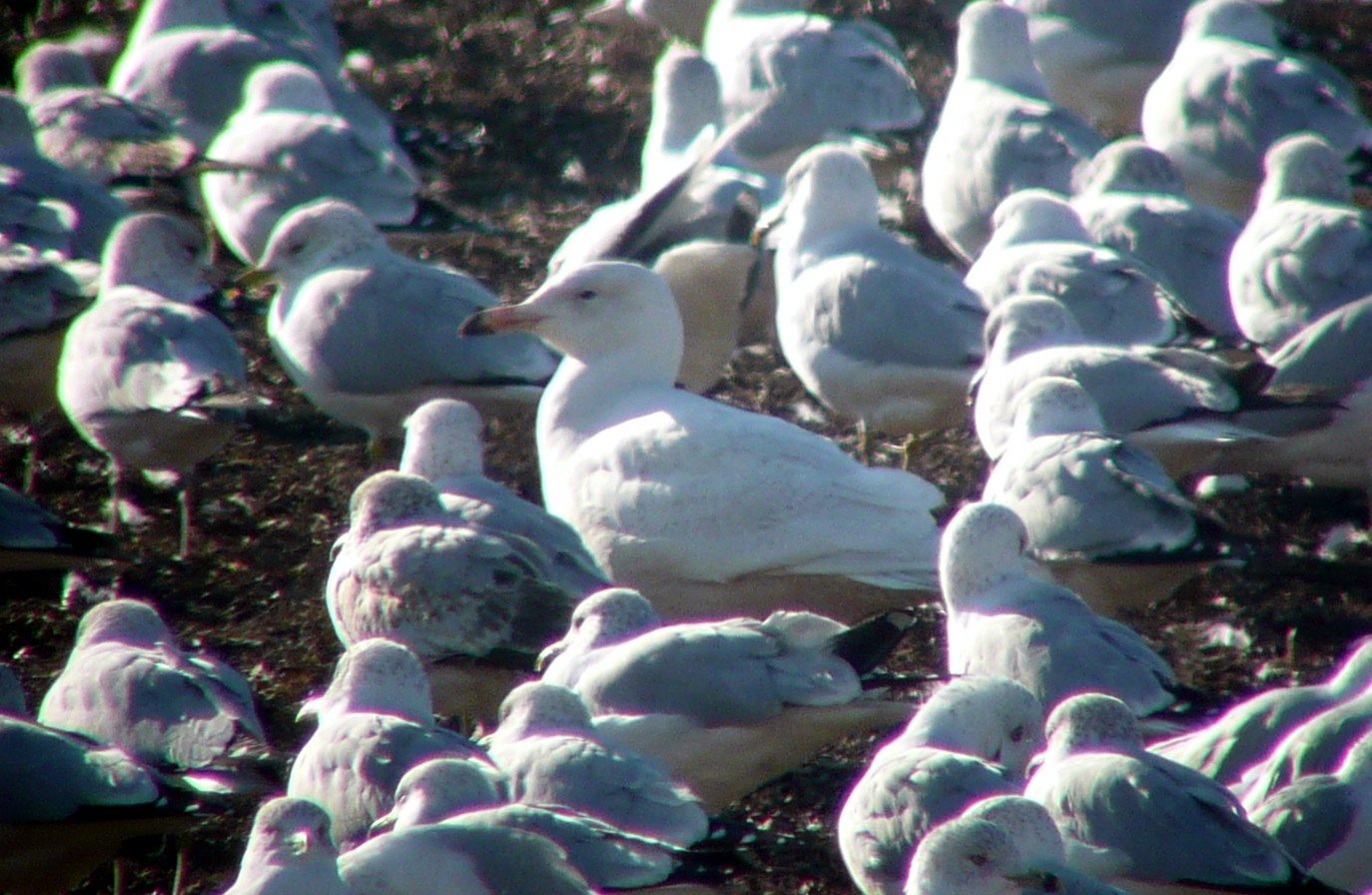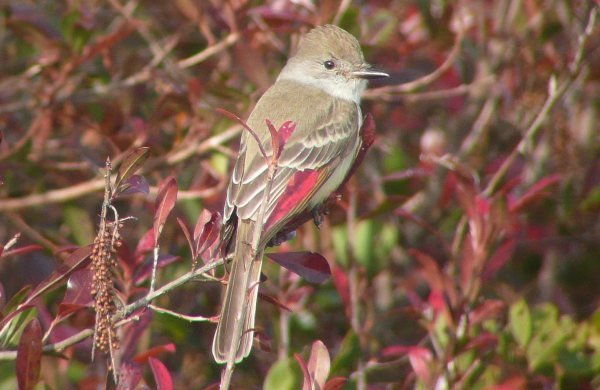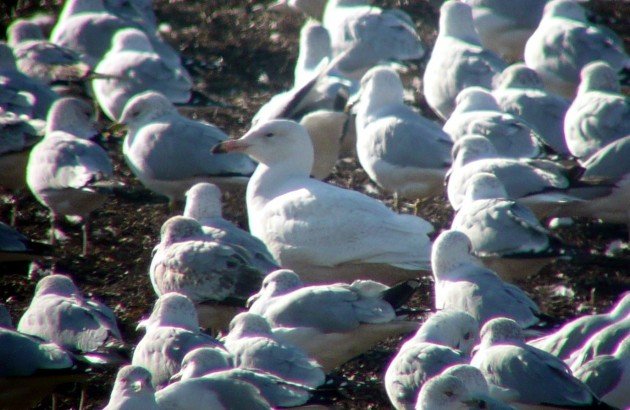
In a recent article on birding in USA Today, I was quoted as saying the following:
Nate Swick, editor of the ABA’s blog, says some people compare birding to golf, in that everyone keeps their own scores, relying on the honor system. What sets birding apart: No one cheats, “because that would be cheating yourself,” he says.
Media is funny thing, and I was misconstrued a bit. What I actually said was that people generally don’t cheat, but that doesn’t mean they never do. The ugly truth is that this stuff doesn’t usually go public in any big way, but the birding record is filled with references to sketchy sightings, lists that are looked upon with raised eyebrows, and even a few cases of outright fraud. We are not immune.
We birders like to consider ourselves a trustworthy group, and when your community is more or less governed by an unpublished but implicitly understood code of conduct that depends on honesty, even in mistakes, it’s no wonder than simply identifying oneself as a birder is often good enough to justify shared cartrips and invitation into homes sight unseen. Self-identifying as a birder among birders means something. It says something about your trustworthiness in a language that other birders instantly comprehend. I think the reasons for this are twofold.
- It doesn’t matter. Your sightings, your numbers, are only impressive to other birders. Even at birding’s highest level, it’s still a pretty tight-knit community. Therefore, the only people who would really care are the very people most able to call you out on your inconsistencies.
- What happens if you get caught.
The first is small potatoes, the second, it’s probably the most important thing you have.
It’s your reputation.
In my vast experience in the terrifying outland that is the world of the non-birder, the biggest question I get concerns the inherent trustworthiness of the avocation. “How”, people always wonder at me, “do you know everyone is telling the truth?”. It’s a fair question, and the answer I give on the record is the first one – which is mostly true – but off the record, it’s the second one that scares me.
Birders are rightly concerned about their reputations in their community. While bird-walks with a small crowd are the social currency of the tribe, for most of us we do a lot of what we do on our own. This means that when you find something unusual you have an obligation to the rest of the community to get it right in case someone else is going to be spending their time and money to try to see it. In this day and age this often means trying to get a photo, but at minimum you’re expected to recognize that what you’re seeing is unusual and be able to recall some basic field marks to justify your sighting.
 In 2008, I found an Ash-throated Flycatcher, then the state’s 12th or so record, in remote Jones County, NC. Even with photos, you’d better be sure I was happy when someone came along and found it again.
In 2008, I found an Ash-throated Flycatcher, then the state’s 12th or so record, in remote Jones County, NC. Even with photos, you’d better be sure I was happy when someone came along and found it again.
I don’t mean to imply that your entire birding career is on the line with every possible report here, because it is understood that some birds can be difficult to ID, or they can avoid giving your good looks, or that mistakes can be made. Being honest about these limitations goes a long way towards hedging any potential damage to that all-important reputation. We birders understand (or at least we should) that honest mistakes are inevitable, after all. The need to accept those mistakes with humility is importance. Refuse to acknowledge you’re wrong? That way lies madness.
Being able to get photos is great, but the gold standard is the refound rarity. But photos can be faked. If a second birder, or a third or a fourth, is able to find the bird you’ve reported then increased cache among the bird community is all but assured. And so the period between the initial find and the refind can be an anxious time for a birder. As an example, not long ago I found a pair of Long-tailed Ducks – a locally rare species – on a nearby reservoir. I was confident in the identification but could not get photos, and I could not help but breathe a sigh of relief when the birds were refound later that afternoon by other birders.
 I found this young Glaucous Gull at a Raleigh landfill among several thousand more common birds. I got photos, which helps, but someone eventually managed to find it a week later.
I found this young Glaucous Gull at a Raleigh landfill among several thousand more common birds. I got photos, which helps, but someone eventually managed to find it a week later.
This type of independent verification is at the heart of building a reputation in your community. When people refind your birds, people realize you know what you’re talking about. Honestly, it doesn’t take much. A couple locally uncommon and well-documented species are all it takes to put yourself on the path to trustworthiness. Birders are willing to give most others in the tribe the benefit of the doubt absent any reason to do otherwise. All you have to provide is enough information to make sure that trust is well-founded.
It’s Somewhere along the line I’ve managed to build a reputation for myself that probably outstrips my own ability as a birder. That’s good for my ego, I guess, but it’s something of an intimidating prospect in reality. That worry informs every call I make, and every bird I report. It forces me to be extra careful. Even so, I am not immune to mistakes, some made in the heat of the moment and spectacularly terrible – we’re all capable of that. But being honest about your limitations in the face of a ever humbling and often poorly seen quarry? That’s the key to making sure your reputation is always on the right side of the line.
Because to end up on the wrong side of that line? Man, I don’t even want to think about it.
And who would want to take that chance anyway?













Good piece, Nate. I’m lucky in that all of my most ridiculous identifications happened before anyone local knew who I was. Now, I’m more careful and finely attuned to my own ignorance – which is massive.
This post is a good one for all newbies to absorb, particularly our burgeoning crop of young birders. When you’re a teenager, proving yourself is just about the most important thing in the world to you. In birding, that means finding the rarity whether it was really there or not. I imagine most of us are a little more forgiving of indiscretions (intentional or just a result of exuberance) among teens than fellow 40-somethings, but it can still be a blot on the reputation for a long time. I wonder if friendly talks about the importance of reputation should be a staple of young birder outings. Maybe they are all already…can’t say I spend much time around kids. They’re the one demographic that intimidates me.
Consider also the responsibility in questioning a sighting.
I blew an identification last week and am indebted to those who knew better and were prepared to put me right.
May I also put forward that promptness is important. Having gotten everyone excited by the prospect of a rarity, get the proof out there quickly so that others can plan their weekend on something concrete.
Yes, good post, Nate. I notice that you don’t give current examples of birders who have metaphorical apostrophes and question marks next to their names. That’s understandable; we don’t want to embarrass people or leave the blog open to counter-accusations. I think that also speaks to another trait of the birding community, that one’s reputation can be salvaged and made good again over time. Still, the fact that reputations are based largely on word of mouth does make one nervous. You have to wonder, does the birder with the questionable reputation know this? Is there a platform in which he/she can defend him/herself? Reputations can be very tenuous things.
I once blew a rarity because I had no idea it was rare; it was a wagtail in California!
The whole things seems weighted to make some people discount their own rarities, if you reflexively assume that it is more likely to be the common species. A few weeks ago I decided a bird I got a fairly quick look at was a juvenile Mugimaki Flycatcher until I saw in the book that Snowy-browed Flycatchers were much more common. I had completely dismissed my own identification skills because of a lack of faith in my ability to spot rarities. Then a day later I saw an unmistakable male Mugimaki, so clearly rare didn’t mean absent. So while there is a danger of turning House Sparrows into Dusky Seaside Sparrows, there is also a danger of turning actual Seaside Sparrows into House Sparrows.
I absolutely agree, Kirby, which is why I always encourage young birders to bird with other people, be it other young birders or in groups with more experienced birders, as often as possible. Having another person to bounce things off of is great.
And if you get some calls right, then that’s only going to help your reputation, and if you blow some, well, you can quickly correct and learn from other birders and no one is going to fault exuberance and honest mistakes.
Great points, Simon. I think we should all be willing to correct honest mistakes free from judgment, which can be an equally hard lesson for experienced birders to learn. Save the ire for those who are being intentionally misleading.
I agree. Reputations can be made good again. But it requires a lot of work, good notes, and transparent photo metadata. 🙂
Good point, Duncan. Finding the line between confidence and overconfidence takes some experience. I’ve been birding for a long time, and sometimes I don’t feel like I know where it is.
Pretty interesting article. I sometimes wonder how to best approach the subject of “you’re wrong” with other birders. If I get corrected I always feel a little uneasy (read: crippling self-defeat) hearing that I’ve got something wrong, but am always thankful to learn. But not everyone wants to be critiqued and perhaps a raised eyebrow is enough. When I was doing Hawkwatches I’d routinely see people rightfully struggle to ID Hawks and not everyone was happy to hear that that “Sharp-shinned” was really a Coop. Besides learning that most field guides woefully undercover ID of birds in flight (why is that?) I also learned that a delicate delivery is essential when trying to critique an ID and only critique if someone asks for it. It always irks me to see or overhear the bird police chime in uninvited “Oh, that’s just a Forest Flycatcher” “no, that’s actually a Green Grackle.” Who are we as birders to step in the way of someone “seeing” Connecticut Warblers where there might only be Yellowthroats? Maybe I shouldn’t be so apathetic, maybe I just want to see more Connecticut Warblers. That being said, I’m not about to chase every Connecticut Warbler that’s reported….
Sam, I find a good approach when birding with someone that knows more than me (everyone) is to phrase every identification as a question. That way you get the kudos if you get it right but are spared embarrassment if it is wrong.
Except when it’s actually a branch, leaf or rock. Nothing can save you then.
Right on cue, I just confirmed a blurry photo of a gnatcatcher to be a Townsend’s Solitaire. Stupid mountain birds making a fool of me…
I saw a Southern Fulmar on the water beside the wharf in Portland, Victoria in 2009 and thought “oh, there are big seabirds down here” and then when a birder I had just met said “WOW…a Southern Fulmar…you rarely see those …ever” and I calmly said “OH…there’s another one!”. A good find…even if I was not aware of its importance immediately!
Thank goodness when I saw the first record of a Blue and White Flycatcher for Australia in 1995 I knew it should not be here!
I think humility goes a long way as well. A birder is much more likely to strengthen their reputation by saying, “I know it sounds weird, but I had a strong candidate for x species based on x field marks” as opposed to, “I saw x species.” I’ve chased the latter, and I’ve been burned frequently.
Nate, I just wanted to say thanks for writing this, your comments really hit home for me. My first big find was an Ash-throated Flycatcher in Michigan, in my back yard of all places. I got tons of pictures when I saw it, but after many attempts it couldn’t be relocated (by me or anyone else). If accepted, it’ll be the sixth record in the state. I’m fairly new to birding (I’ll have been at it two years in March) so my reputation is something I consider every time I submit something out of the ordinary.